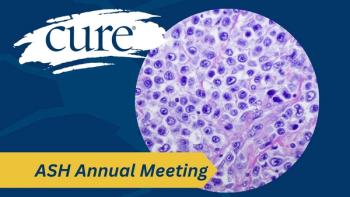
Radiation Dermatitis May Depend on Skin Bacteria in Breast Cancer
The skin microbiomes of patients with breast cancer who received radiation therapy may affect whether they get radiation dermatitis, a study showed.
Patients with breast cancer who received radiation therapy and experience radiation dermatitis may have an overgrowth of a specific group of bacteria, which emphasizes the association between the skin microbiome and radiation dermatitis, according to a recent study from JAMA Oncology.
It’s important for patients to know that “there is a chance skin microbiome and radiation dermatitis are related,” Dr. Wendy Woodward, professor and chair, ad interim of the department of breast radiation oncology at The University of Texas MD Anderson Cancer Center, told CURE®.
She explained that radiation dermatitis occurs after radiation therapy and causes skin darkening or sunburn, which may lead to itchiness, irritated hair follicles, redness and skin peeling.
The study’s researchers evaluated 20 patients — with a median age of 67 — with breast cancer after surgery who also underwent radiation therapy. Of note, their findings reflected that patients’ skin microbiome may affect whether they get radiation dermatitis and that a higher amount of skin surface bacteria within the skin led to increased severity of radiation dermatitis.
“It strikes me looking at this new microbiome [study] that showed that if you actually treat the [skin] microbiome, patients don't get radiation dermatitis,” said Woodward. “That it's possible all of these different bacteria might have the ability to give off these cytokines (proteins secreted by bacteria) that turn on this inflammation response and cause radiation dermatitis.”
READ MORE:
Although the researchers from the study reported that their findings regarding the association between the skin microbiome and radiation dermatitis could possibly be a useful biomarker, Woodward said it likely isn’t that easy to do.
“If the things that we do to prevent and treat radiation dermatitis were easy, and everyone could do them, you wouldn't even need to bother,” she explained. “So that is our approach. We're always doing things to prevent radiation dermatitis.
“And anyone who's had radiation would tell you they saw their radiation oncologist every week, so they can check their skin and make sure that we're giving people what they need to take care of it. But if we could do something preventative, I think we would do that for everybody. I don't think you'd need a test to say, ‘Oh, you're at especially high risk.’ I think we just try to, because what if your risk was not from this exact thing that these 20 patients showed, but it was a slightly different thing? We may as well just see if we can find the big-picture mechanism and treat it for everybody.”
For patients with breast cancer who received radiation therapy, Woodward noted that radiation dermatitis is common and that communicating with a radiation oncologist is important to manage the symptoms.
“Radiation for breast cancer is getting shorter and shorter, and patients have fewer and fewer symptoms, which is great,” Woodward said. “So it's a problem when you have it. Many patients will only have mild radiation skin change and there are lots of things we can do about it.”
For more news on cancer updates, research and education, don’t forget to





